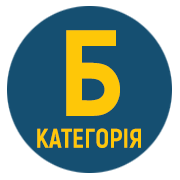PSYCHOLOGICAL ASPECTS OF THE FORMATION OF THE PRESCHOOL CHILDREN’S IMAGINATION
Keywords:
preschool age, imagination, development of the imagination of the child-preschoolerAbstract
In the article the problem of the development of imagination during preschool ontogenesis is considered. It is found out that imagination – a kind of reflection of objective reality, the mental process, consisting in creating new images through the processing the material of perceptions and ideas that arose in the previous experience.
Imagination is a major notion in preschool age, since it is formed under the influence of game activity, and allows to substitute one subject by others. Images of imagination in children of preschool age are still unstable, the direction of its work is rapidly changing under the influence of external impressions.
It was found that creative activity is impossible without imagination, which preschoolers use constantly in various situations: playing, telling tales, talking about their future, etc.
The preschooler uses a fairly wide range of techniques for creating imagery images: anthoromypromization, agglutination, hyperbolization, supplementation and paradoxical combination. The dynamics of the imagination development in the preschool age is described: the first stages of the development of the imagination – in the period of 4–5 years, the second – 6–7 years. The basic psychological conditions of its development are determined. It has been established that for the development of the imagination and creativity of the preschool child, the most favorable is the adult’s position, which provides space for childhood autonomy, initiative, encourages the smallest manifestations of the child’s imagination. The development of the child’s imagination takes place in the game and in productive activities.
Separate methods of the formation of the imagination are the encouragement for the development of the idea, the planning of its implementation, to create imaginary situations; stimulating imagination when reading children’s literature; statement of creative tasks, problem situations of game content. The insufficient development of the imagination leads to persistent negative experiences, to obsessive fears, anxiety.
The individual peculiarities of imagination in preschool children are empirically studied: the level of complexity of imagination, the flexibility of imagination and the degree of fixation of images of representations and the degree of stereotyped imagination. The level of development of imagination in pre-schoolers is singled out and exercises for its development are offered.
References
Выготский Л. С. Воображение и творчество в детском возрасте: Психолог. Очерк: книга для учителя. М.: Просвещение, 1991. 94 с.
Гальченко В. М. Теоретичні аспекти формування творчих здібностей дошкільників. Збірник наукових праць Інституту психології ім. Г. С. Костюка АПН України / за ред. С. Д. Максименка. Т.VІ. Вип. 3. К., 2004. С. 90–97.
Дуткевич Т. В. Дитяча розвивально-корекційна психологія: модульний навчальний посібник для студентів ЗВО за напрямом підготовки 6.030103 «Практична психологія». К.: Центр учбової літератури, 2017. 304 с.
Дуткевич Т. В. Дошкільна психологія: навч. посібник. 2-ге вид. К.: Центр учбової літератури, 2016. 392 с.
Дьяченко О. М., Кириллова А. И. О некоторых особенностях развития воображения детей дошкольного возраста. М.: Вопросы психологии, 1987. С. 44–51.
Мухина В. С. Психология дошкольника / под ред. Л. А. Венгера. М.: Просвещение, 2005. 239 с.
Хрестоматія з історії дошкільної педагогіки: навч. посібник / за заг. ред. З. Н. Борисової. К.: Вища школа, 2004. 511 с.





